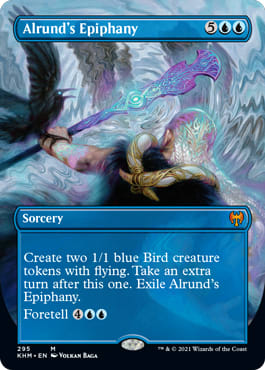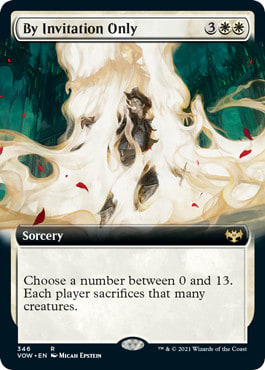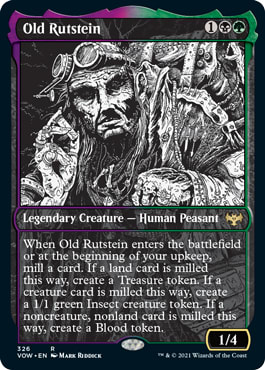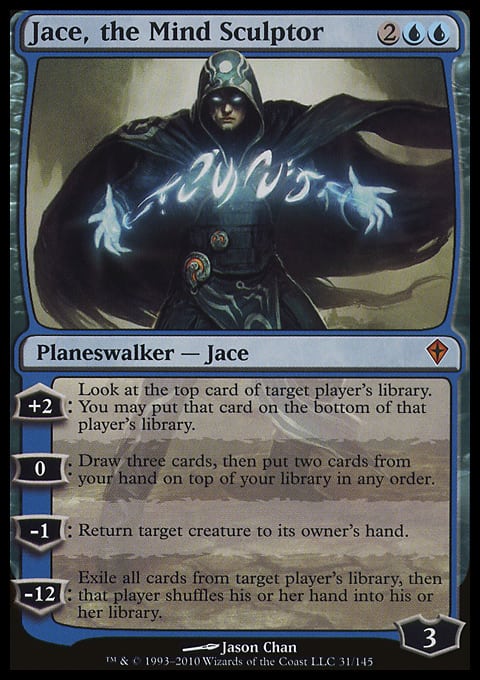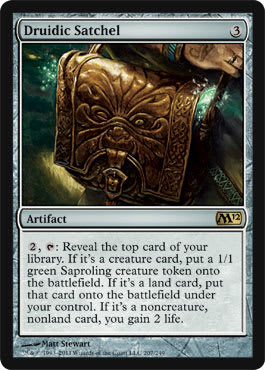Listen:
Up Up, Down Down
Many of you already know the rest of what I mean by reading those four words. The most famous cheat code in the history of gaming, the Konami Code provided extra lives in Contra before unlocking hidden content in a dozen other games. Today, the wildly popular WWE tag team The New Day named their also wildly popular video game YouTube channel after it.
So... Magic.
You're familiar? In Planetary, the Drummer calls magic - or just between you and me, let's call it Magic - the cheat codes for the world. Information that unlocks some of that sweet, sweet DLC. Over and over in our Magic, there is a mite of additional information that, once you know about it, falls into your spine like up up, down down. You just have to know about it first. Then you get the extra life.
Taking a cue from the most recent Limited format, imagine a situation like this:
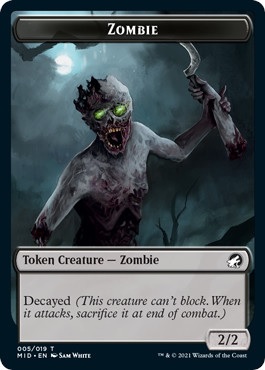 |  |  |
You have five total Zombies; Siege Zombie activates base-three... So you're one short of two pings.
Or are you?
Once you realize Hobbling Zombie can trade with anything on the other side, you might choose to block a fatty, and then tap it and two of the tokens before damage. Hobbling Zombie will die - but take a ferocious Burly Breaker or Shadowbeast token with it! Then it will be replaced by a Zombie token... Because that's how the card works when it dies.
So, while you'll never actually have six creatures in play at any particular moment given this hypothetical... You will have six over the duration of that turn, allowing you to ping with your Siege Zombie twice.
Extra life.
Or think about this card:
Most players who have, say, four copies in their sixties know that they are supposed to try to get up to 8 mana to double it with Galvanic Iteration. Some might realize that getting up to eleven provides even more cooperative chaos with a little flashback. You win with those Birds!
But you might be surprised at how many don't know they can just use Alrund's Epiphany to buy an extra life (or an extra turn or two), like the self-sacrificing Hobbling Zombie. Do they have trample? No? Great! Your Epiphany might just arbitrage itself into the two or three draw steps you need to build the resources you need to really get there and win! You might not win with those two particular Birds; but they sure help you not-lose.
Executing once you know what you're looking for is now easy... But you might not have been able to put it together before learning the magic words. Following are a couple of preliminary cheat codes to new friends - or tools at least - from Innistrad: Crimson Vow.
By Invitation Only - Opposite Day
In general, the notion of sweepers is to kill more of the opponents cards than your own. Or, given the fact that most of us have suffered the indignity of a one-for-one Wrath of God, the same number.
Back at Canadian Nationals 1997, Mike Donais innovated with a singular focus around this, around Wrath of God card advantage. Mike used Icy Manipulator to tap down one of the opponent's creatures, always forcing him to play a second. That way, he could get at least two-for-one with his Wrath of God (not to mention having the Icy in reserve for the next wave).
This became what is now the age-old tradition.
But the cheat code to By Invitation Only is to play the opposite way.
Sure, you can have fewer creatures than your opponent. Sure, they might have all thirteen. So, if you only have one or two, they might have to sacrifice some dozen more creatures than your, you know, one or two: Card Advantage.
But what if you have one really good creature, and the opponent can hold it off with a bunch of garbage? What if your alpha strike can get one attacker through unblocked, but it's a measly 1/1 instead of the vicious killer you really want hitting? Worse, what if you would lose your good stuff to an able block?
By Invitation Only creates a new potential paradigm for attack. Imagine you have fourteen creatures, but thirteen of them don't really make your soul sing. Your opponent has fewer creatures, but can effectively block... Or at least disincentivize attacks with the threat of a great block.
If you have at least one more creature than the opponent this card can help to get it through.
No, that's not the usual way we cast a sweeper. Nor, I suspect, will it be the usual way we cast By Invitation Only. But you see the possibility now, don't you? The cheat code can become part of our quiver of tricks and tools.
Cemetery Protector - The postmodern Nightpack Ambusher
When I first saw Cemetery Protector, I was not particularly impressed. Weird stats, right? Who wants to pay four mana for a 3/4, even if it does have Flash?
But after a little consideration, I remembered my old buddy Nightpack Ambusher.
I was very high on that card early on, dedicating multiple articles and podcast episodes to it before eventually winning a Blue Envelope to the last ever PT (to date!) with it as my centerpiece. Nightpack Ambusher let me sit back on open mana, forcing the opponent to play into permission. The turn they eventually took off, I could stick a highly efficient 4/4 at instant speed... Before returning to leaving open mana every turn as the Ambusher accrued more and more card advantage.
Imagine Cemetery Protector in a deck of otherwise all instants. Lands of course; maybe ONE copy of Lier, Disciple of the Drowned; but otherwise 20+ or even 30+ counters and cantrips.
How difficult would it be to have one Consider in the graveyard the turn you want to play this? Can you have traded off an opportunistic Jwari Disruption // Jwari Ruins?
Because if so, I feel like Cemetery Protector will put the lauded Nightpack Ambusher to shame. Imagine how much value you can get out of even one-for-ones you wanted to trade off anyway. How much more amazing does every self-replacing cantrip look?
I'm not sure how many truly new decks are going to come out of Crimson Vow... But I can tell you, if one does? Cemetery Protector Flash is at the top of my potentials.
Old Rutstein is Jace, the Mind Sculptor
Let me tell you a story.
The tournament was New York States 2012. I had put together an Izzet deck with tons of card drawing and card advantage; with a thin creature team headlined by then-newcomer Snapcaster Mage. Otherwise, my deck was Shock and a bazillion types of flashback card drawing.
Once I actually got to the tournament site, Sean McKeown asked me if I had heard of this card Druidic Satchel. I hadn't. I knew my deck was the best. I knew that it was pointless to play Galvanic Blast over Shock. But I did not know Druidic Satchel.
Well, Sean thought it might be good in my deck.
I later heard that Andrew Cuneo - a deck designer I had admired since 1997 - and Reid Duke (then an unknown) had both tried a copy in their sideboards. I read Druidic Satchel. To read it was to love it. One copy in my sideboard would never do! I immediately bought three copies and found a way to play them. Once I did that I had to run back to the dealer tables to obtain Galvanic Blasts (I ended up with a mismatched quartet, two foil) because the possibility existed that I would have all three Satchels in play at the same time. 1) Sorry, Shock. 2) This did in fact come up.
Druidic Satchel seemed to me like a Planeswalker. And not just any Planeswalker. I was getting Jace, the Mind Sculptor vibes. No it wasn't exactly Jace, the Mind Sculptor. I had to have mana open every turn, and it had no Ultimate... But it could create a way to win (or defend me), accelerate my mana, or generally build value. Yes, I needed two mana to operate it, unlike a Planeswalker... But one of the things this card was good at was getting extra lands into play.
I decided the ![]()
![]() deck I had made was the best deck I had ever made. I was really dialed in. But in particular I was gaga for Druidic Satchel. I called my friend Patrick Chapin to tell him about how dialed in I was. How great Druidic Satchel was. How great my deck was. Really, it was the best deck I had ever made.
deck I had made was the best deck I had ever made. I was really dialed in. But in particular I was gaga for Druidic Satchel. I called my friend Patrick Chapin to tell him about how dialed in I was. How great Druidic Satchel was. How great my deck was. Really, it was the best deck I had ever made.
Not only was it not the best deck I had ever made, Patrick argued; it probably wasn't the best Izzet deck I had made in the last twelve months. The previous year I had won that 5k in the debut tournament of a deck you've probably heard of: ![]()
![]() Splinter Twin. Okay, okay... Maybe it wasn't the best deck, or the best Izzet deck; but it was good and Druidic Satchel was great.
Splinter Twin. Okay, okay... Maybe it wasn't the best deck, or the best Izzet deck; but it was good and Druidic Satchel was great.
I talked about Druidic Satchel on Twitter.
I realized that I had a gold mine.
Well, I didn't have the gold mine yet. But I could. Because I knew about the gold mine. And then I would have it. Very few people had heard of Druidic Satchel. Only true innovators like Andrew or Reid were playing it at that point. I could - how much were Druidic Satchels? I could get them for about $.49. We all know what a chase Rare - even an in-print one - can spike for.
I bought all the Druidic Satchels.
When I say "all" the Druidic Satchels, I probably don't mean all the Druidic Satchels in the world, but I cleared out more or less every content website. At $.49, twenty Druidic Satchels here and twenty Druidic Satchels there were not going to be an issue.
My friend and old teammate Steve Sadin called me. "If you're going to do something like this, you need to give us the heads up." Steve is a fancy Vice President at WB Games today after bringing us everything from Sonic the Hedgehog to Two Dots in years past... But back in 2012 he was the Content Manager - my editor - at Star City Games. "Why would I do that?" I asked. "Because now we don't have any Druidic Satchels... And people want them."
That, of course, was the g-d point.
The price spiked.
If this were the stock market I would have already declared victory. I moved the price about $.15.
Bwahahahaha.
I could...
I could make....
It was only after declaring victory that I realized I had no interest in eBaying individual Druidic Satchels for a $.15 profit; and the fact that I was at that point priced into a volume move... You get the idea. All right kid, you won. Now it's time to take your ball and go home. The lesson for me is that I am not interested in dealing Magic: The Gathering cards, just playing them.
I still have the vast majority of these Druidic Satchels.
Oh. Old Rutstein. Right. Can we agree that Old Rutstein has kind of a Druidic Satchel vibe? By extension, that would make him Jace, the Mind Sculptor.
In all seriousness, Old Rutstein also has quite the Skullport Merchant vibe. About 40% of the time he is going to be a 1/4 for three mana that makes a Treasure token. And while Old Rutstein might lack Skullport Merchant's ability to translate Treasure into in-hand cardboard advantage, I think he makes up for it by producing more and more tokens over time. The problem, if there is one, is that we don't know what kind of tokens they will be.
So, what is the cheat codes here?
When I played Druidic Satchel, I mostly activated it at the end of the opponent's turn. Mostly. While I couldn't control what was on top, I could see what was on top by activating... And some of the time, what was on top was Snapcaster Mage.
This was almost universally great! Snapcaster Mage was the best card in my deck! But in addition, revealing it would signal a particular kind of token that I particularly wanted. In those rare circumstances I then knew to activate again on my own upkeep. This slight change in play pattern would guarantee a second 1/1 token in a context where creatures were both valuable but infrequent.
Old Rutstein can't control what he's making any more than Druidic Satchel... But you can help. You know how we talked about playing Cemetery Protector with all instants? Incidentally you can also play that card with all creatures. Trade off somewhere in turns 1-3, and every creature you run thereafter becomes some kind of a Dawnheart Mentor; which is also kind of cool.
You can bias Old Rutstein's output with a deck construction decision (or fifty-four). What if you played lands and creatures? You'd never accidentally make a Blood token when what you really want is an Insect.
Manaform Hellkite - White Lightning
In the summer of 1999 Sixth Edition rules changed lots of how things in Magic worked. Timing changed. How (or when) you might die changed. There was this newfangled thing none of us had ever heard of introduced: The Stack.
But going back to those timing rules, a big one changed how one particular card worked... Or could work.
Waylay was intended to be a defensive card. The opponent attacks. You make three 2/2 duders to ambush their attackers at instant speed. Blocks occur. Presumably no one gets out alive. Your 2/2s certainly don't.
But with Sixth Edition rules, a new wrinkle appeared: At end of turn and until end of turn were differentiated. You could now cast Waylay during the End Step after "at end of turn" effects had been put on the stack. The 2/2 Knights would still go away... But not until the next "at end of turn". This unintended consequence essentially gave White Weenie a Delayed Blast Ball Lightning. You could cast Waylay during the opponent's end step, then attack with them for six on yours.
This was a paradigm changing shift. Which was good and bad. Good because we had the technology. My Madison, WI based teammates Brian Kowal and Adrian Sullivan brought it to us for Nationals. Bad because I drafted Waylay. I mean good because I face planted that table 3-0. But then bad because the cheat codes of the universe had been spilled. As with up up, down down, White Weenie itself got a shot in the arm; an extra life.
You probably know the rest of the story. Waylay became THE thing on Day Two. White Weenie spiked at the last minute, and put up Top 8 finishes when it probably wouldn't have been able to contend with the speed of the combo decks otherwise. I myself played against people who had written out the Waylay timing so they could read it properly in-game, not knowing how this fundamental tentpole of their deck had worked when they arrived at the toughest Standard tournament of the year, twenty-four hours earlier. Our Hero finished 9th, on breakers.
Notice something about Manaform Hellkite?
The baseline way to play this card is as a Baneslayer Angel. Tap out for it and maybe it will stabilize the universe. A 4/4 flying Dragon for four mana isn't anything to sneeze at, after all.
The Next Level play is to run it at five mana. With one open you can Fading Hope to protect it (or you), or Consider to make a blocker... Or maybe sneak in a point immediately. The five-mana play pattern shifts the Hellkite closer into the Mulldrifter zone.
But the big brain cheat code is to treat this card as a Delayed Blast Waylay long-term. Rather than using mana on your own turn to get in an extra point or four... What happens when you pass, satisfied with an initial swing for four? What happens when you flash back Memory Deluge during the opponent's end step? Even if they counter. Even if they remove the Hellkite?
White Lightning. Except for seven.
LOVE
MIKE


















